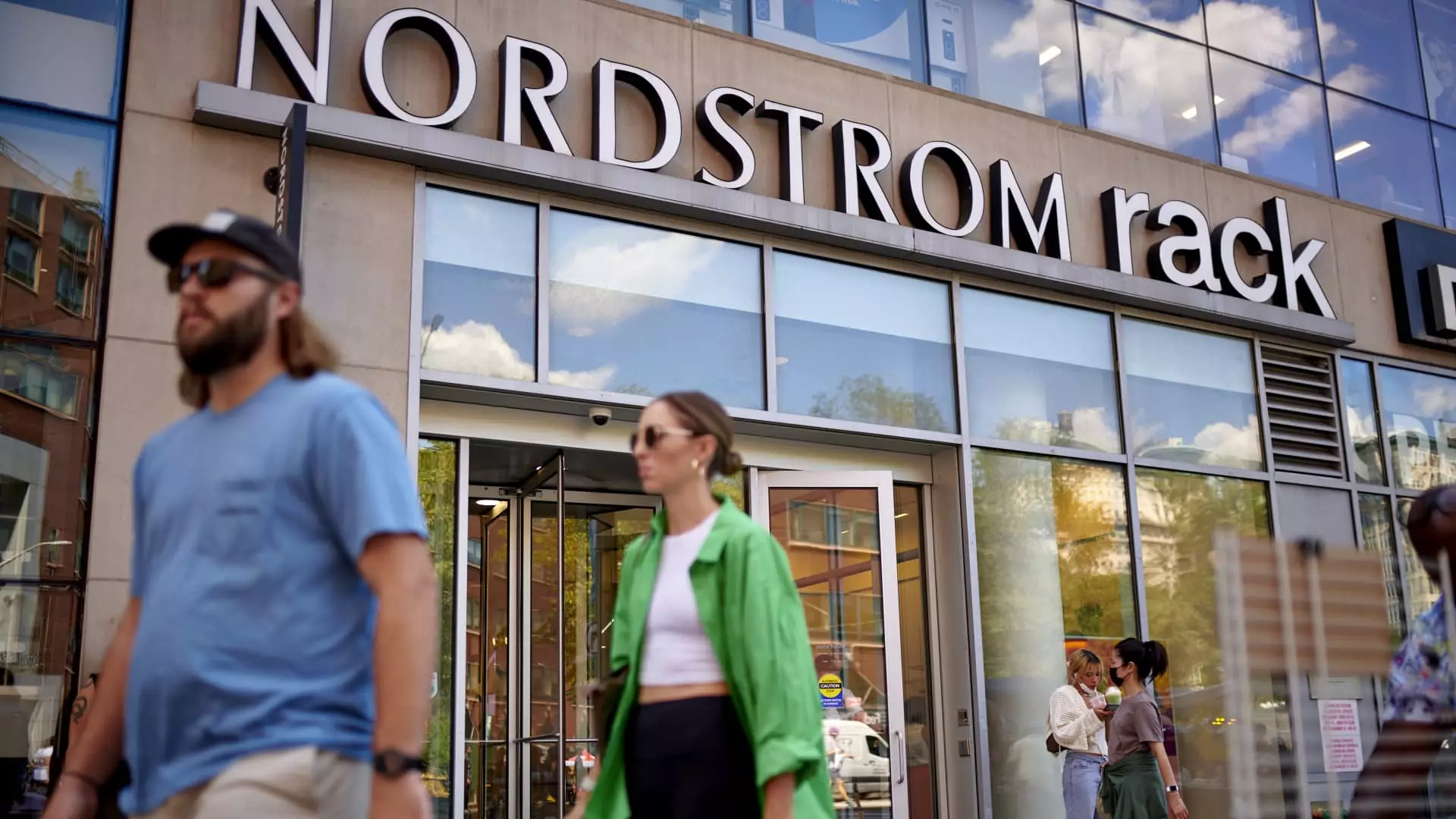Nordstrom has recently revealed its second-quarter earnings, showcasing performances that exceeded analysts’ expectations. The Seattle-based retail chain reported adjusted earnings per share of 96 cents, surpassing the Wall Street forecast of 71 cents. This performance indicates that Nordstrom is making notable strides in its quest for efficiency and cost reduction in an increasingly competitive retail landscape. However, while the earnings beat expectations, the company’s guidance for the fiscal year presents a more nuanced picture, sparking concerns regarding future growth amidst external economic pressures.
Analysis of Yearly Forecast and Sales Projections
Despite the impressive quarterly results, Nordstrom’s outlook for the remainder of the year is relatively lukewarm. The company has adjusted its expectations for adjusted earnings per share to a range of $1.75 to $2.05, slightly up from the previous $1.65 to $2.05 range. Furthermore, they expect sales to experience stagnation, with projections indicating a potential decline of 1% to a growth of 1% from the previous year, an improvement over prior estimates of a 2% decline to a 1% increase. This cautious outlook reflects not only the current business climate but also the challenges that retailers face as consumers become increasingly hesitant to spend due to ongoing inflation and climbing interest rates.
Leadership’s Viewpoint on Performance
In a recent announcement, CEO Erik Nordstrom conveyed optimism about the company’s performance moving forward. He emphasized the strength seen in both retail banners and the progress being made toward expanding profit margins. The confidence exhibited by leadership underscores a strategic pivot aimed at retaining operating efficiencies while confronting market pressures. Erik stated, “Our second quarter results were solid, and we’re encouraged by the continued topline strength in both banners.” This alignment of positive earnings and strategic focus may instill some measure of confidence among investors, especially as Nordstrom navigates a landscape marked by heightened consumer caution.
Breakdown of Financial Performance
During the three-month period concluding on August 3, the retailer posted net income of $122 million, translating to 72 cents per share. This figure, however, marks a decline from the prior year’s net income of $137 million, or 84 cents per share. Excluding unique items like supply chain impairments, the adjusted earnings of 96 cents per share indicate an ongoing recovery trend for the retailer. Moreover, total revenue reached $3.89 billion, slightly up by 3.4% from the $3.77 billion realized in the same quarter last year. While the overall sales growth remained modest, it highlights Nordstrom’s ability to adapt to prevailing economic conditions and innovate where necessary.
Delving deeper into sales figures, Nordstrom recorded a 1.9% increase in comparable sales, accompanied by a 3.5% rise in gross merchandise value (GMV). It remains unclear how much of this increase resulted from augmented prices versus actual volume growth, which is significant given the ongoing demand pressures spurred by inflation. Retailers, including Nordstrom, are actively strategizing on operational enhancements to bolster profits, recognizing that the discretionary spending behavior of consumers is under strain.
A key area of focus for Nordstrom has been Nordstrom Rack, the off-price division that has captured significant momentum in the market. Sales in this segment surged by 8.8%, with comparable sales rising by 4.1% compared to the same period last year. This growth starkly contrasts with Nordstrom’s mainline retail banner, which saw modest increases of just 0.9%. The company is also strategically expanding its Nordstrom Rack locations, having opened 11 new sites this fiscal year, with aims to unveil a total of 22 by year-end. This aggressive expansion is crucial for competing with giants like TJX Companies, the parent company of TJ Maxx and Marshalls, and for appealing to consumers drawn to off-price offerings.
While Nordstrom’s recent earnings showcase resilience and operational improvements, the cautious forecast and external economic pressures underscore the need for continued adaptability. The retailer’s evolution hinges on successfully bolstering its off-price segment and maintaining an agile supply chain. As consumer spending behaviors continue to shift, the strategic initiatives undertaken by Nordstrom will be critical in navigating the complexities of the retail environment. The upcoming months will be pivotal in determining whether the optimism expressed by the company’s leadership will materialize into sustainable performance.

